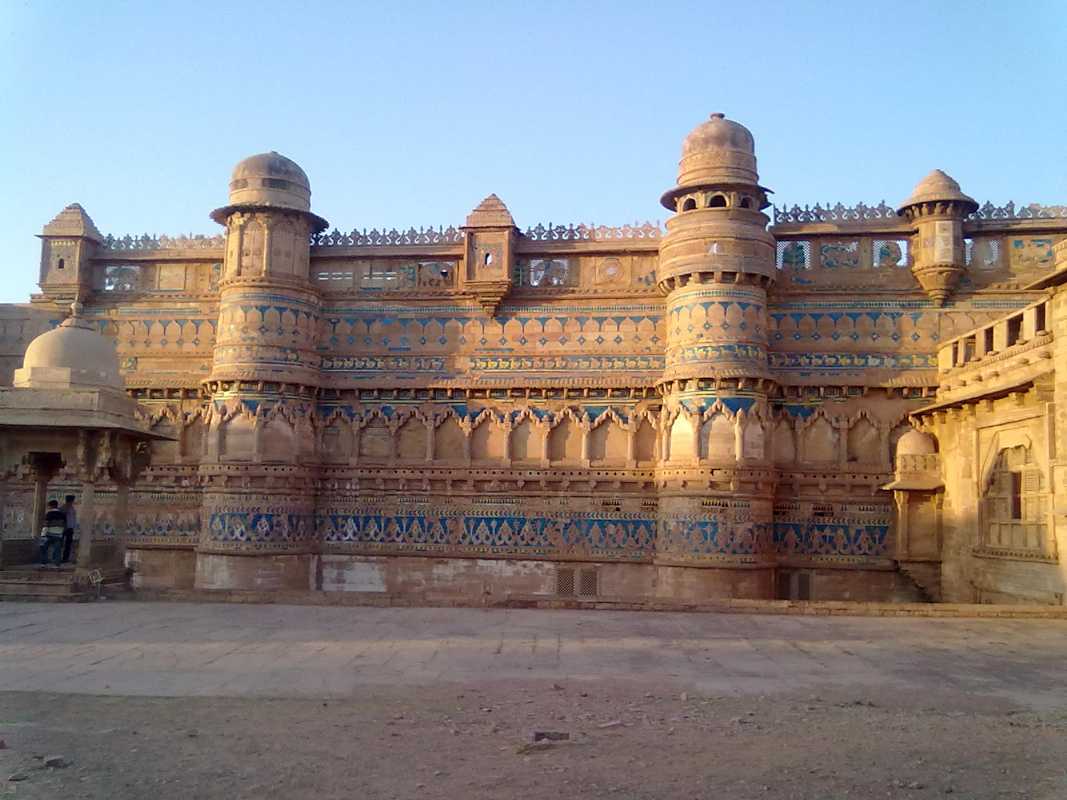Gwalior Fort: A Testament To History And Architectural Brilliance
Share
Nestled in the heart of India, Gwalior Fort stands as a magnificent symbol of the region's rich history and architectural prowess. This fort, often referred to as the "pearl among fortresses in India," has witnessed the rise and fall of empires, making it a significant landmark for history enthusiasts and travelers alike.
A Glimpse into History
Gwalior Fort's history dates back to the 6th century, with its origins attributed to the Tomar dynasty. The fort has been a silent witness to numerous battles and political intrigues, serving as a strategic military stronghold. It was also the birthplace of the legendary ruler, Raja Man Singh Tomar, who is credited with enhancing the fort's grandeur.
The fort's strategic location atop a hill made it an ideal defense point against invasions. Over the centuries, it has been occupied by various rulers, including the Mughals and the Scindias, each leaving their mark on its architecture and layout.
Architectural Marvels
Gwalior Fort is renowned for its stunning architecture, which reflects a blend of Hindu and Islamic styles. The fort complex is home to several palaces, temples, and monuments, each showcasing intricate carvings and exquisite designs.
The Man Mandir Palace
One of the most notable structures within the fort is the Man Mandir Palace, built by Raja Man Singh Tomar in the 15th century. This palace is famous for its beautiful blue tiles and ornate carvings. The palace's design includes stunning jharokhas (overhanging enclosed balconies) that offer breathtaking views of the surrounding landscape.
The Saas Bahu Temples
Another architectural highlight is the Saas Bahu Temples, dedicated to Lord Vishnu. These temples are known for their intricate sculptures and carvings that depict various deities and mythological scenes. The temples are a fine example of the artistry of the era and are a must-visit for anyone exploring Gwalior Fort.
The Gujari Mahal
The Gujari Mahal, built for the queen of Raja Man Singh, is another architectural gem within the fort. This palace features a unique blend of Indo-Islamic architecture and houses a museum that showcases artifacts from the region's history.
Key Attractions Within Gwalior Fort
Gwalior Fort is not just about its historical significance; it also offers various attractions that cater to different interests.
The Gwalior Fort Sound and Light Show
One of the most captivating experiences at Gwalior Fort is the sound and light show that narrates the fort's history. This show takes place in the evenings and is a fantastic way to learn about the fort's past while enjoying the stunning backdrop of the illuminated fort.
Teli Ka Mandir
Teli Ka Mandir is another remarkable structure within the fort complex. This temple, dedicated to Lord Vishnu, is known for its unique architecture, featuring a tall shikhara (tower) that resembles a temple from the South Indian style. The temple's intricate carvings and sculptures are a testament to the craftsmanship of the time.
The Fort Walls
Walking along the fort walls offers panoramic views of the city of Gwalior and the surrounding landscape. The fort's walls, which stretch over three kilometers, are an impressive sight and provide insight into the fort's defensive capabilities.
Best Time to Visit Gwalior Fort
The ideal time to visit Gwalior Fort is during the winter months, from October to March. During this period, the weather is pleasant, making it perfect for exploring the fort and its surroundings. Summers can be quite hot, with temperatures soaring above 40°C, while the monsoon season brings heavy rainfall, which may hinder outdoor activities.
Weather Information
- October to March: Pleasant weather, ideal for sightseeing.
- April to June: Hot summers, temperatures can exceed 40°C.
- July to September: Monsoon season, heavy rainfall can occur.
Getting to Gwalior Fort
Gwalior is well-connected by road, rail, and air. The nearest airport is Gwalior Airport, which is approximately 8 kilometers from the fort. Regular trains and buses connect Gwalior to major cities across India, making it easily accessible for travelers.
Hotels and Accommodations
For a comfortable stay, Gwalior offers a range of hotels and accommodations to suit different budgets. Here are some options to consider:
- Taj Usha Kiran Palace: A luxury hotel set in a former palace, offering a royal experience.
- Hotel Gwalior Regency: A mid-range hotel with modern amenities and a convenient location.
- Hotel Aditya: A budget-friendly option with basic facilities.
You can book your accommodations through this link.
Flights to Gwalior
Booking a flight to Gwalior is straightforward, with several airlines operating flights to Gwalior Airport from major cities. For flight bookings, you can check this link.
Conclusion
Gwalior Fort is not just a historical monument; it is a vibrant piece of India's heritage that tells the story of its glorious past. Whether you are an architecture enthusiast, a history buff, or simply looking for a unique travel experience, Gwalior Fort has something to offer everyone. With its stunning architecture, rich history, and breathtaking views, a visit to Gwalior Fort is sure to leave you with unforgettable memories.
As you plan your trip, don't forget to explore the surrounding attractions and immerse yourself in the local culture. Gwalior awaits you with open arms, ready to share its tales of valor and beauty.




